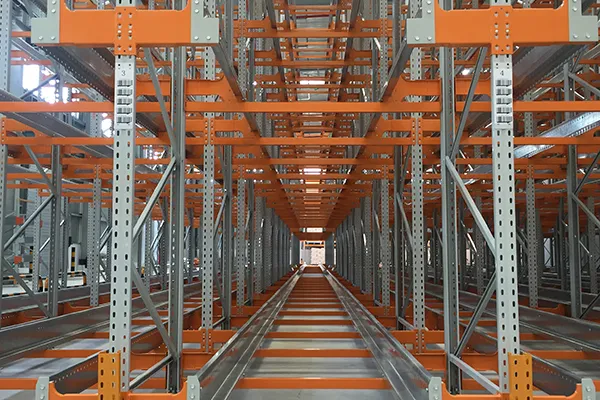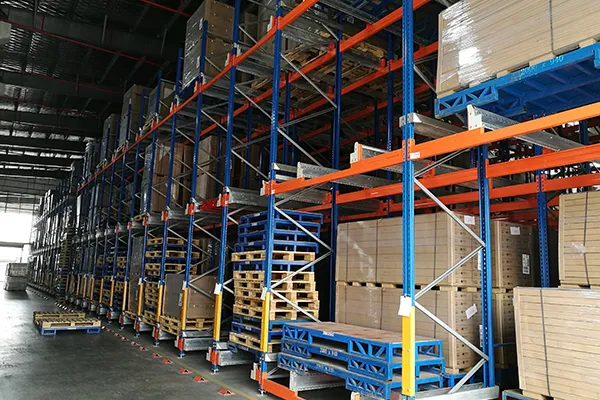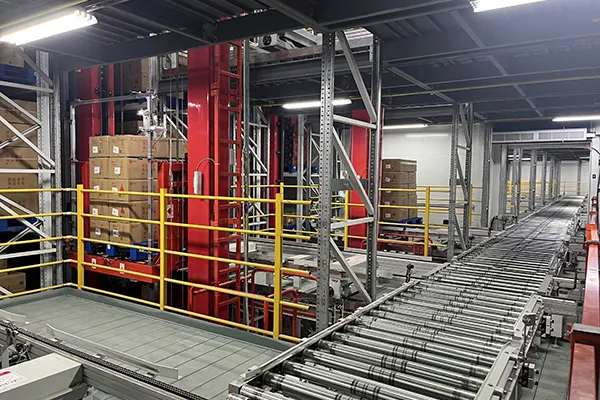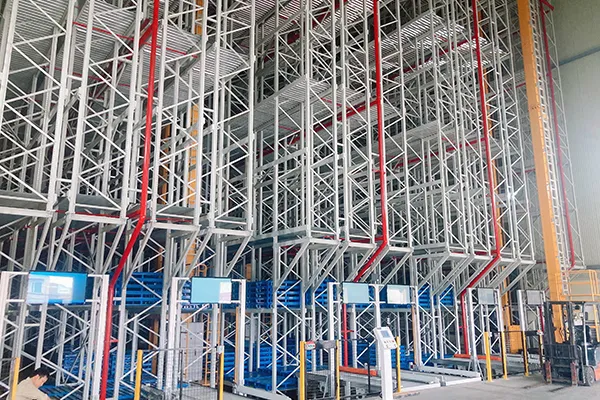In today’s fast-paced global economy, the demand for efficient and reliable logistics solutions has never been higher. Automated warehouse systems stand at the forefront of this transformation, with pallet conveyor systems playing a pivotal role in streamlining operations. These systems not only enhance productivity but also reduce human error, making them indispensable in modern supply chains. This article delves into the intricacies of pallet conveyor systems, exploring their composition, structural design, key advantages, and diverse application scenarios, offering a comprehensive guide for businesses seeking to optimize their Warehousing process.
Composition of Pallet Conveyor Systems
A pallet conveyor system is an integrated network of components designed to transport palletized goods seamlessly within a warehouse or distribution center. Its core elements include conveyors, which form the backbone of the system, and can be categorized into roller conveyors, chain conveyors, and belt conveyors, each suited for specific load types and ·operational needs. Roller conveyors, for instance, are ideal for heavy-duty applications, utilizing cylindrical rollers to move pallets with minimal friction. Chain conveyors, on the other hand, employ linked chains to provide robust support for heavier loads, often used in high-throughput environments.
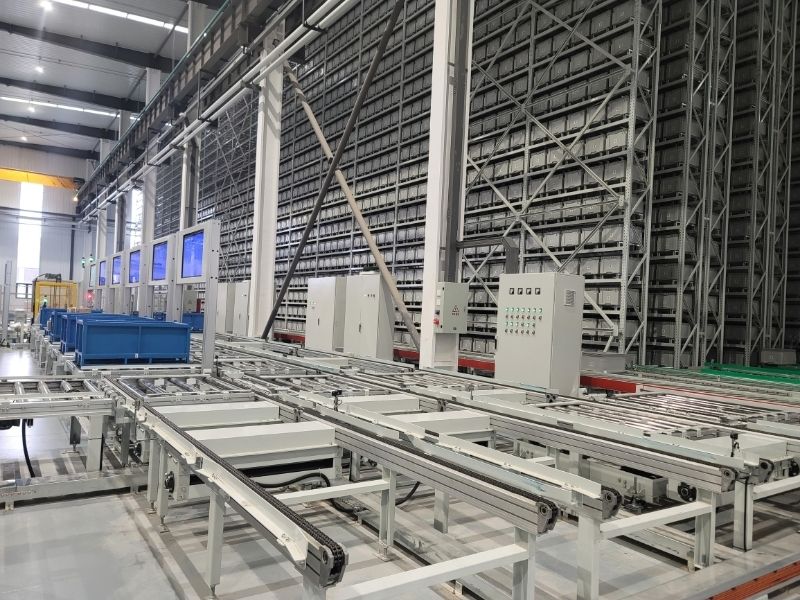
Complementing these are transfer cars and turntables, which facilitate directional changes and intersection management, ensuring smooth transitions between different conveyor lines. Control systems, powered by programmable logic controllers (PLCs) and supervisory control and data acquisition (SCADA) software, orchestrate the entire process, enabling real-time monitoring and adjustment. Sensors and scanners are integrated to detect pallet positions, weights, and barcodes, ensuring accurate tracking and sorting. Additionally, safety features such as emergency stop buttons and guarding systems are essential to protect personnel and equipment, forming a holistic system that operates with precision and reliability.
Structural Design of the Equipment
The structural integrity of pallet conveyor systems is paramount to their performance. Typically constructed from high-strength materials like steel or aluminum, the framework provides durability and stability under continuous use. The conveyor beds are engineered to support varying pallet sizes and weights, with modular designs allowing for customization based on warehouse layout and throughput requirements. For example, in a typical roller conveyor, the rollers are spaced appropriately to distribute weight evenly, reducing the risk of damage to goods.
Drives and motors form the heart of the system, delivering the necessary power to move pallets. These can be centralized or decentralized, with the latter offering greater flexibility and energy efficiency. In chain-driven systems, sprockets and chains work in tandem to propel pallets, while belt conveyors rely on pulleys and belts for smoother motion. The control panels housing the PLCs are strategically placed for easy access, often featuring user-friendly interfaces that allow operators to manage speed, routing, and diagnostics. Moreover, the integration of IoT-enabled devices enables predictive maintenance, alerting teams to potential issues before they escalate, thus minimizing downtime and extending equipment lifespan.
Key Features and Advantages
Pallet conveyor systems boast a range of features that set them apart from manual or semi-automated alternatives. One of the most significant advantages is their ability to operate continuously, 24/7, without fatigue, leading to a substantial increase in throughput. This automation reduces labor costs and minimizes human error, resulting in higher accuracy in inventory management and order fulfillment. The systems are highly scalable, allowing businesses to expand or reconfigure them as needs evolve, without major overhauls.
Energy efficiency is another standout benefit, with many modern systems incorporating regenerative drives that capture and reuse energy during deceleration. Safety is enhanced through automated guarding and collision avoidance technologies, creating a safer work environment. Furthermore, these systems improve space utilization by enabling high-density storage and retrieval, often integrating with automated storage and retrieval systems (AS/RS) for optimal efficiency. From an environmental perspective, reduced material handling and optimized routes contribute to lower carbon footprints, aligning with sustainable business practices. Overall, the reliability, flexibility, and cost-effectiveness of pallet conveyor systems make them a wise investment for any logistics-driven organization.
Application Scenarios and Industry Benefits
The versatility of pallet conveyor systems allows them to thrive across various sectors. In manufacturing, they are crucial for just-in-time production lines, where raw materials and finished goods are transported between assembly stations and storage areas, ensuring seamless workflow. The automotive industry, for instance, relies on these systems to handle heavy components like engines and chassis, enhancing precision and reducing cycle times.
In retail and e-commerce distribution centers, pallet conveyors facilitate rapid sorting and shipping of goods, enabling same-day or next-day delivery capabilities. They integrate with warehouse management systems (WMS) to prioritize high-demand items, boosting customer satisfaction. The food and beverage sector benefits from hygienic designs that meet strict sanitation standards, with easy-to-clean surfaces preventing contamination. Additionally, in pharmaceuticals, these systems ensure traceability and compliance with regulatory requirements by maintaining controlled environments during transportation.

Beyond these, logistics hubs and ports utilize pallet conveyor networks to manage cross-docking and transshipment, reducing handling times and improving supply chain resilience. The advantages extend to reduced operational costs, faster ROI, and enhanced competitiveness in global markets. By adopting such systems, companies can adapt to fluctuating demands, such as seasonal peaks, without compromising on efficiency or quality.
Conclusion
In summary, pallet conveyor systems represent a cornerstone of automated warehousing, driving efficiency, safety, and scalability in diverse industrial landscapes. As technology advances, the integration of AI and machine learning promises even greater optimization, paving the way for smarter, self-adjusting systems. For businesses aiming to stay ahead in the logistics race, investing in these innovative solutions is not just an option but a necessity for future growth


